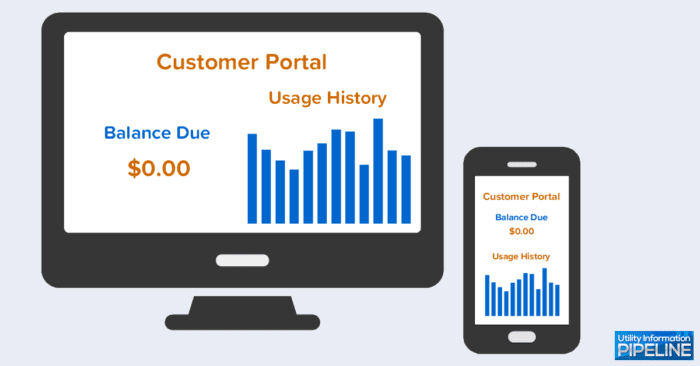I’ve been doing some research into customer portals, primarily for utilities with AMI systems. A customer portal for a utility with an AMI system allows customers to view their usage trends and monitor their hourly usage. However, not all utilities in this situation bill in individual gallons and I believe that’s a mistake. Let me explain why…
Why have utilities historically billed in larger increments?
Many utilities bill in thousands of gallons, where a usage of 1 indicates 1000 gallons. This practice has its origins in hand-written meter books (remember those?). It was less work, and resulted in fewer errors, for both meter readers and billing staff to drop the last three dials from the meter reading. Meter readers had fewer digits to write in the meter book and billing staff had fewer keystrokes when entering meter readings.
Why do utilities continue to bill in larger increments?
I can think of two reasons why this is the case. The first is TTWWADI Syndrome – That’s The Way We’ve Always Done It. This brings to mind the story of the inquisitive girl helping her mother cook the holiday ham. Mom started out explaining that they have to cut some off of each end of the ham. Her daughter asked why and Mom said, “I’m not sure, you’ll have to ask Grandma when she gets here.”
No sooner than Grandma arrived and the girl asked her, “Grandma, why do we cut both ends off of the ham before we cook it?” Grandma replied, “I’m not sure, you’ll have to ask Great Grandmother when she gets here.”
So, when Great Grandmother arrived, the girl inquired again, “Great Grandmother, why do we cut both ends off of the ham before we cook it?” Great Grandmother explained, “Well dear, that was the only way the ham would fit in the pan.”
The moral of the story, obviously, is if you don’t stop to inquire why things are done a certain way, you’ll continue doing what you’ve always done when there may not be a valid reason to keep doing it that way.
The second reason I can think of for billing in thousands is because rates are generally expressed in thousands of gallons. For example, $5.00 per thousand gallons. What this overlooks, of course, is that $5.00 per thousand gallons is the same as $.005 per gallon. To accomplish this, for each place you move the decimal point to the left for the usage, do the same for the charge.
Why is this a mistake?
As I stated above, I believe it’s a mistake to bill in anything other than gallons (or cubic feet if your meters register cubic feet, but we’ll talk more about that later), if you have an AMI system with a customer portal.
My rationale for why I consider this to be a mistake is your customers should be able to track the usage on their utility bill back to the usage for the same period from the customer portal. If your customer portal is registering hourly usages in gallons and your utility bill rounds to the nearest thousand (or hundred) gallons, there is no way they can do this. And they will find that confusing and frustrating.
Conservation and drought restrictions
This applies even if you don’t have an AMI system. If you have conservation goals for your customers to meet or drought restrictions they cannot exceed, there is no way for them to monitor their actual usage if you are rounding the usage on their bill.
So, what about cubic feet meters?
From a customer service perspective, I have a real issue with presenting utility bills in cubic feet. This is because the average person has no concept of what a cubic foot is, whereas they easily understand how much a gallon is because they buy milk and other commodities by the gallon.
I understand there’s nothing you can do if your utility has meters that register in cubic feet, but you can apply the conversion factor to your usage in cubic feet so your customers see their bills in gallons.
Do you need help converting to billing in gallons?
If your utility needs assistance in converting to billing in gallons, please give me a call at 919-673-4050 or e-mail me at gary@utilityinformationpipeline.com to find out how a business review could help you accomplish that.

© 2023 Gary Sanders
